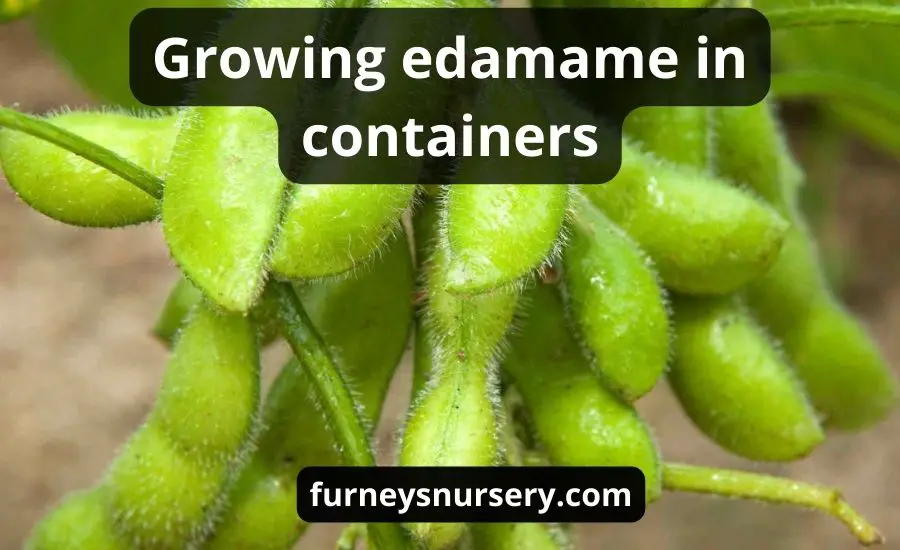Edamame is a flavorful and nourishing legume. The practice of growing edamame in containers has become increasingly popular in recent years. It’s a great source of vitamins, minerals, and protein. I believe growing edamame yourself at home has several advantages, including convenience and space-saving.
In this article, I will provide detailed instructions on how to grow edamame in containers.

Contents
What is edamame?
The immature pod of the soybean plant is known as edamame. The fuzzy pods contain edible and tasty soft beans. I believe they are typically eaten slightly salted, steamed, or blanched.
Edamame is the Japanese word for “stem beans”. The word’s earliest recorded use was in 1275, and soybeans were initially cultivated 7,000 years ago in China.
When fully grown, the pods become hard and begin to dry out. I noticed Soy milk, soy flour, soy sauce, tempeh, tofu, and various other soy-based foods and products are all made from mature, dried beans.
Although they are currently farmed in North and South America, I realized soybeans are originally from East Asia. The bushy, frost-sensitive annual soybean plant can reach a height of 12 to 36 inches. Similar to other types of bush beans, soybean plants usually do not require staking.
Nutritional benefits
Edamame is highly nutritious and is rich in Potassium, Iron, Calcium, Fiber, Protein Isoflavones, and Antioxidants. I analyzed the protein content of one cup of cooked edamame and it’s approximately 17 grams, the same amount as one cup of milk. Edamame is a great source of fiber as well. A cup of edamame contains about 8 grams of fiber or approximately one-third of the daily intake for adults.
Furthermore, edamame is a great source of vitamins and minerals. I believe a cup of cooked edamame contains 10% of the recommended daily intake of vitamin C, 20% of vitamin K, and 15% of folate.
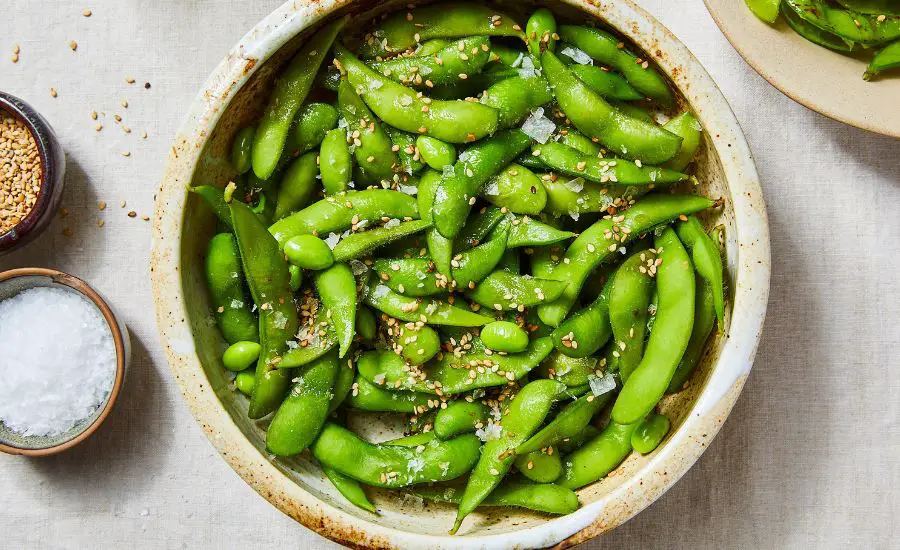
How to plant edamame in a container?
I propose the following step-by-step instructions on how to grow edamame in a container.
Prepare the container
Edamame plants can be cultivated in a small space with no difficulty if placed in a container 8 to 12 inches deep and wide. Making sure there are drainage holes at the bottom of the planter container is another important consideration.
The planter can be made from any object that has good drainage and soil holding capacity. This aids in the drainage of excess water from the roots and stops root rot from occurring. I sometimes drill holes in the pot before using it if none already exists.
If you choose a large pot, you can grow several plants as long as you maintain a 6-inch distance between them.
The next step I take is to add a sufficient amount of soil to the container.
To get the Edamame container ready, I mix one part bleach with ten parts water and let the pot soak at room temperature for approximately one hour. After soaking, I carefully rinse the pot with water and let it air dry in the sun before planting.
I never use garden soil directly because it contains a lot of sand or clay. In addition, garden soil contains bugs, diseases, and chemicals that could damage newly germinated edamame crops.
Therefore, I search for potting soil with a high nutritional content that is free of pests and diseases. I always remember to include 1 part perlite, 1 part coco coir, and 1 part vermiculite in the soil preparation.
I add some compost to the other side of the potting soil to help enrich the soil with beneficial organisms and nutrients. I usually make sure there is at least 2 inches of space between the soil and the left rim of the container before filling it with soil to prevent the issue of water spilling out.
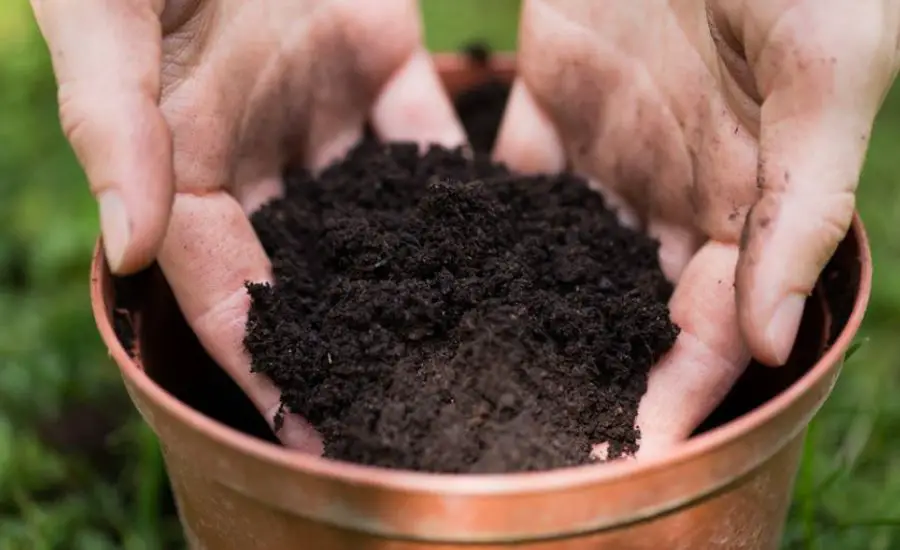
Plant the seeds
I always ensure that the seeds are planted in well-drained, compost-enriched soil in full sun conditions when the temperatures reach 60°F or above. I sow seeds in the center of the hole, then cover it with a layer of soil that is roughly a finger’s thickness.
I usually plant edamame seeds 1 to 2 inches deep. It is not advisable to plant edamame seeds that are damaged or scarred because they will not sprout. The edamame seeds should begin to germinate in 7 to 10 days. During this period, the potting soil should be kept moist until the edamame seeds can germinate and establish themselves.
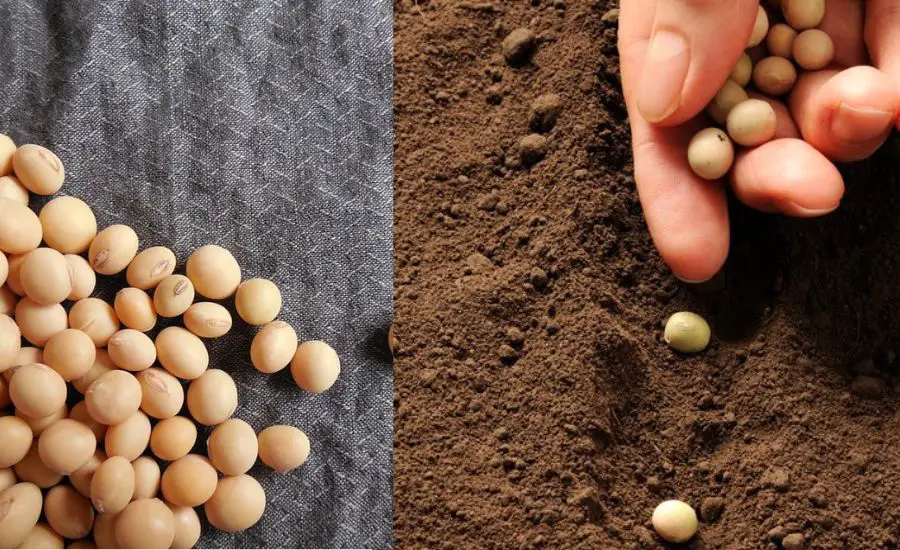
Transplantation
When choosing a transplantation pot size, it should be approximately 1-2 inches larger than the plant’s current size if the plant is currently in a container that is 10 inches or smaller.
Most of the time, all you need is a few inches of soil surrounding the roots.
Afterward, I remove the seedling with the root ball from the initial container. I then make a hole in the new pot and transplant. I usually add more potting soil and press it firmly around the base to strengthen the root ball and give it more stability.
Provide adequate support
Edamame typically doesn’t require staking. However, I suggest a teepee trellis as a form of support system.
Care and maintenance
I propose the following care and maintenance requirements for edamame plants.
Water requirements
Edamame should be kept continuously moist but not waterlogged for optimal growth. I mostly check the soil moisture every few days to ensure that it isn’t drying out too much. Watering your plants is necessary if the soil is dry to the touch one inch below the surface.
Sunlight and soil temperature requirements
A potted edamame plant needs full sun for a minimum of six hours daily to flourish and yield properly. Plants grown at lower temperatures (below 65°F) or in areas with insufficient sunlight will develop more slowly and yield less.
Fertilizer requirements
Edamame is a legume, meaning that it can fix Nitrogen from the air into its roots. Nevertheless, more fertilizers are still needed to get a satisfactory yield.
I often opt for a balanced organic fertilizer such as compost tea or fish emulsion to supply nutrients all through the growth season.
Avoid overfertilizing, it could lead to an excessive Nitrogen content in the soil thereby hampering the growth of edamame plants.
Weed control
Maintaining a weed-free environment is essential for the development of edamame.
I’m certain edamame will produce a better-quality harvest if no weeds are competing for sunlight, nutrients, and water.
I noticed regular weeding and mulching are the best methods to keep weeds away. You could also start considering building a fence or trellis system around the container garden.
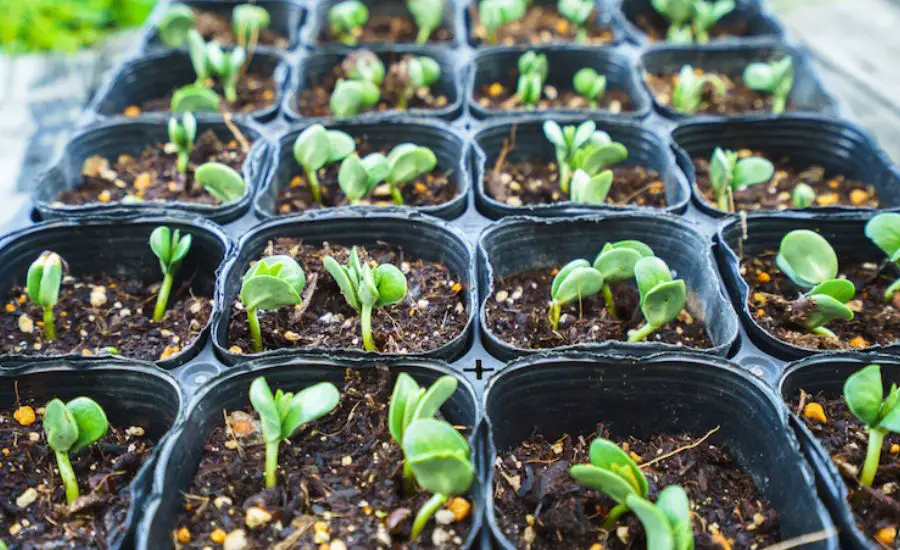
Best edamame companion plants
Beans
Beans are one of the best edamame companion plants. They are low maintenance and don’t require much water. Your edamame plants can therefore absorb as much water as they require without having to share. Additionally, I noticed beans repel mites and aphids.
Cucumbers
I believe cucumbers are great edamame companion plants because they don’t need an abundance of sunlight to thrive.
Squash
Squash is an excellent edamame companion plant due to its ability to grow in warm settings and little requirement for direct sunlight. I noticed it also repels slugs.
Peas
Peas are excellent edamame companions because they are legumes( just like lima beans) and attract beneficial insects. I noticed that this indirectly helps both plants grow more efficiently. Peas also repel aphids.
Edamame plant pests and diseases
I am usually mindful of pests and diseases when cultivating edamame in pots. I have noticed that the common pests of edamame include thrips, aphids, slugs, beetles, caterpillars, and spider mites. Natural pest repellents like neem oil or insecticidal soap solutions work well for controlling these pests.
I noticed planting companion plants is another powerful deterrent. Nematodes and other garden pests can be repelled from edamame plants by marigolds. Mosquitos can be repelled by garlic.
Lastly, I apply a fertilizer specifically designed for legumes to give the plants the best possible nourishment.
I realized that Fusarium wilt, powdery mildew, and bacterial blight are among the diseases that edamame plants are susceptible to. Crop rotation should be done annually to prevent these diseases.
Fallen leaves or debris could cause bacteria or fungi in the soil therefore clear them to help lessen the incidence of diseases. I remove infected leaves immediately after noticing them.
I tend to water Edamame plants from the ground level rather than from above to prevent moisture on leaves thereby lessening the risk of fungal infections.
Harvesting and storage of edamame
Determining the maturity of edamame is essential for a productive harvest. I noticed that the best time to harvest edamame pods is when they are between two and three inches long and the edamame beans inside are still bright green. As the pods reach maturity, they will turn yellow, and the edamame beans will get hard and inedible.
Harvesting techniques
Edamame can be harvested manually or with a pair of scissors. Hand harvesting involves delicately pulling the pods off the stalk. I always take care not to harm the surrounding pods or the entire plant. Alternatively, you can cut the pods from the stem using scissors. I have tested this method and it is recommended for larger crops because it is faster and more effective.
Storage
Edamame must be adequately stored to maintain its freshness. Fresh edamame can be kept in the fridge for up to a week. I usually put them in an airtight container or a plastic bag. The edamame should be blanched in boiled salted water for two to three minutes before being placed in a freezer-safe container if you intend to freeze them.
You may store frozen edamame for up to six months.
All things considered, edamame harvesting and storage are easy tasks that require little to no effort. Following these recommendations ensures your edamame is ripe, flavorful, and properly stored for maximum freshness.
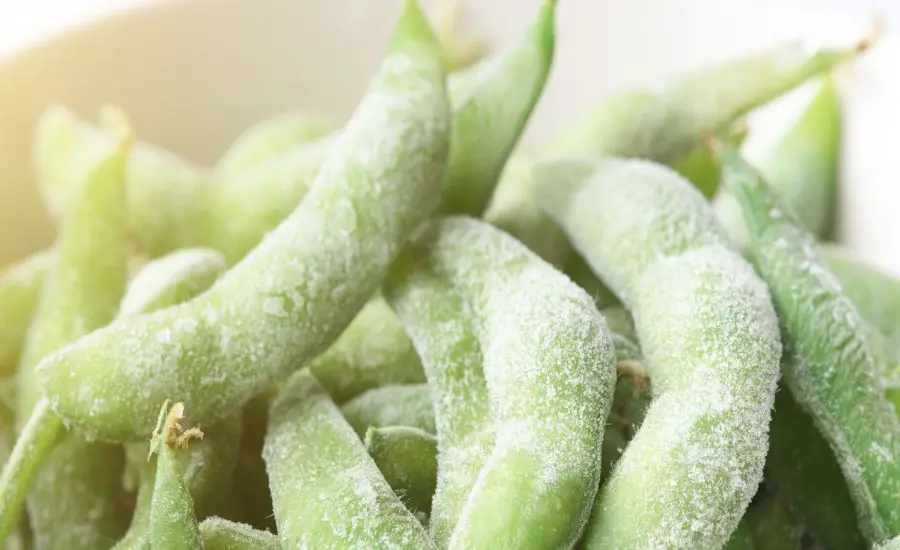
FAQ
Can edamame grow in pots?
Yes, they can grow in pots.
Does edamame need to climb?
Generally, edamame plants do not need to climb.
How long does it take to grow edamame?
It takes approximately 10-12 weeks to grow edamame.
Do edamame plants need support?
Generally, edamame plants do not require any additional support.
Does edamame need a lot of sun?
They need a minimum of 6 hours of direct sunlight daily.
What can you not plant next to edamame?
Edamame shouldn’t be planted close to crops that need substantial amounts of nitrogen, for example, broccoli and corn. Edamame will produce fewer beans as a result of competition from these plants for the nitrogen in the soil. I noticed that edamame does not grow well next to lettuce or cabbage because the aphids attracted by these plants will feed on the edamame plants.
Conclusion
Growing edamame is quite easy. Make sure the basic requirements are provided if you intend to grow soybeans(edamame) including nutrient-rich soil, water, and adequate sunlight. Also, I always remember to check seed packets and growing instructions.
A garden is a place that relaxes us and reflects our personal style, it’s a place to spend time with loved ones and grow our own fruits and vegetables. Maybe you’re looking for design inspiration or plant selection, or you’re concerned about garden privacy, shady areas, or pests, but don’t worry, you’ve come to the right place.
